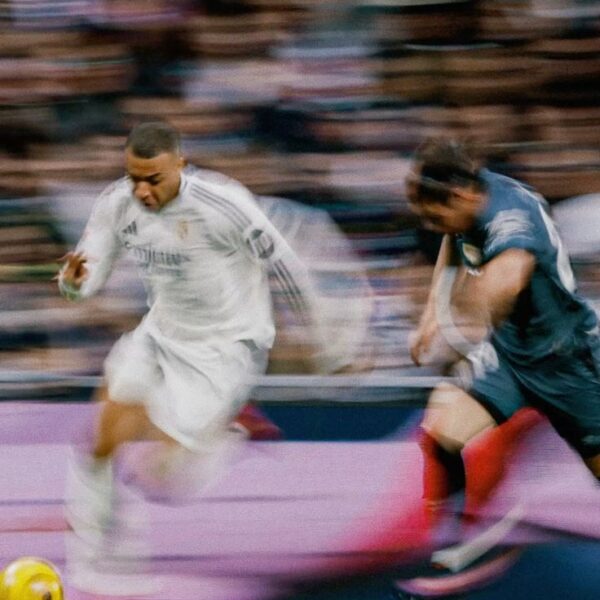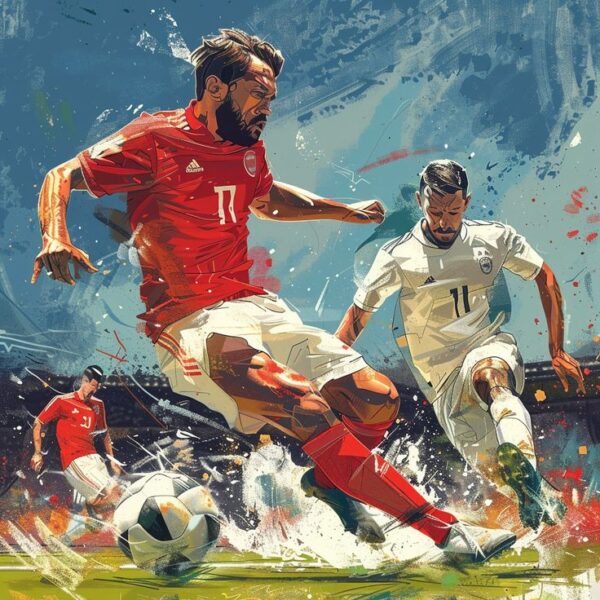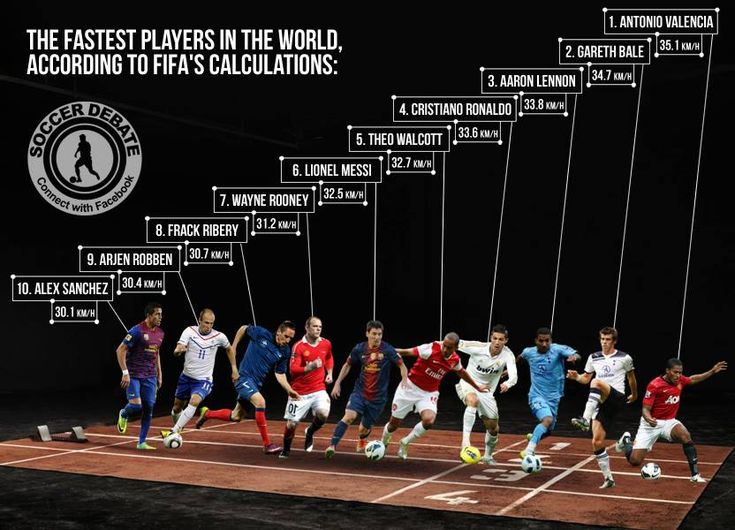Introduction: Speed as the Ultimate Weapon in Modern Football
In the high-octane world of professional football, speed isn’t just a luxury — it’s a necessity. The fastest football players can change the outcome of a game in seconds, outrunning defenders, leading counterattacks, and becoming unstoppable forces on the pitch. As football evolves into a more dynamic and physically demanding sport, raw speed has become one of the most prized attributes for clubs and national teams worldwide.
This article explores the elite speedsters redefining the game, diving into the stats, training, and strategies behind the world’s fastest football players in 2025 and beyond.
What Does It Mean to Be the Fastest Football Player?
Definition of Speed in Football Terms
Speed in football isn’t just about running fast in a straight line. It encompasses sprint acceleration, top-end velocity, lateral agility, and recovery quickness. The fastest football player is typically the one who can reach top speed rapidly and maintain it effectively during gameplay, especially in high-stakes moments like breakaways and defensive recoveries.
Sprint Speed vs Acceleration vs Agility
There’s a difference between a player who is quick off the mark (acceleration) and one who can maintain a high pace over long distances (sprint speed). Agility adds another dimension — the ability to change direction swiftly while maintaining balance and control. The most valuable speedsters combine all three traits, making them multidimensional threats.
Why Speed Matters in Tactical Formations
Modern tactics heavily rely on pace, especially in systems that emphasize high pressing, fast counterattacks, and wide play. Managers use the fastest football players to stretch defenses, exploit space behind the backline, and create transitional advantages. Whether it’s a rapid winger or a marauding full-back, speed shifts the tactical balance in favor of the attacking side.
How Is Player Speed Measured in Football?
GPS Tracking and Motion Sensor Technology
Thanks to advancements in sports science, measuring player speed has become more precise. Professional clubs use wearable GPS trackers and motion sensors that monitor real-time speed, distance, and acceleration. This data is collected during training and official matches to evaluate performance and identify the fastest football player in each squad.

FIFA-Verified Speed Stats
FIFA and UEFA now publish verified top speed stats from international competitions, allowing fans and analysts to compare players across teams and tournaments. For example, Kylian Mbappé recorded a staggering 38 km/h during a World Cup run, one of the highest officially recorded speeds in football history.
Speed vs Game Awareness: A Balanced View
While speed is electrifying, it’s not everything. Many elite players with moderate speed compensate with superior positioning, vision, and ball control. However, when combined with tactical intelligence, speed becomes a near-unstoppable asset — the hallmark of today’s fastest football players.
The Top 10 Fastest Football Players in the World (2025 Edition)
#1 – Kylian Mbappé (PSG & France) – 38 km/h

Kylian Mbappé continues to dominate the speed charts in 2025, clocking a blistering top speed of 38 km/h. Known for his explosive acceleration and effortless stride, Mbappé is widely regarded as the fastest football player in the world. His sprinting ability complements his world-class finishing and dribbling, making him one of the most feared forwards in the game.
#2 – Alphonso Davies (Bayern Munich & Canada) – 36.5 km/h
Nicknamed “The Roadrunner,” Alphonso Davies is a left-back with winger-level pace. In Bundesliga and Champions League matches, Davies frequently records speeds of over 36 km/h, using his velocity for recovery runs and overlapping attacks. His physical explosiveness has reshaped the modern full-back role.
#3 – Achraf Hakimi (Paris Saint-Germain & Morocco) – 36.3 km/h
Hakimi is a lightning-fast wing-back who seamlessly transitions between defense and offense. His pace is a crucial part of PSG’s attacking system, and his top recorded sprint of 36.3 km/h places him among the elite speedsters of world football.
#4 – Ousmane Dembélé (Paris Saint-Germain & France) – 36 km/h
#5 – Rafael Leão (AC Milan & Portugal) – 35.8 km/h
#6 – Mohamed Salah (Liverpool & Egypt) – 35.7 km/h
#7 – Karim Adeyemi (Borussia Dortmund & Germany) – 35.6 km/h
#8 – Mykhailo Mudryk (Chelsea & Ukraine) – 35.5 km/h
#9 – Federico Valverde (Real Madrid & Uruguay) – 35.2 km/h
#10 – Erling Haaland (Manchester City & Norway) – 35.1 km/h
These elite players combine lightning speed with sharp technical ability — and many are not just fast in open play, but also during transitions, with the ball at their feet.
Fastest Football Player by Position
Fastest Forward: Kylian Mbappé
Mbappé’s role as a wide striker allows him to exploit defensive gaps with his unmatched acceleration. His combination of sprint speed and finishing ability makes him a nightmare for defenders in both counterattacks and structured play.
Fastest Midfielder: Federico Valverde
Valverde covers immense ground every game, often sprinting from box to box at speeds over 35 km/h. His pace enables Real Madrid to transition quickly and maintain tactical fluidity.
Fastest Defender: Alphonso Davies
Davies’ hybrid role between left-back and winger leverages his elite speed. He frequently recovers possession with long sprints back into position, offering both defensive cover and attacking width.
Fastest Goalkeeper: Manuel Neuer (Historically)
While not a current top speedster, Neuer has been known for his “sweeper-keeper” style, sprinting off his line more aggressively than any keeper in modern football history. Today’s young keepers are increasingly trained in similar high-line dynamics.

Young Rising Stars with Incredible Speed
1. Alejandro Garnacho (Manchester United)
At just 20 years old, Garnacho has already reached speeds of 35.3 km/h in Premier League matches. His fearless dribbling and ability to beat defenders in one-on-one situations hint at a bright future.
2. Lamine Yamal (Barcelona)
The teenage sensation combines agility, close control, and explosive acceleration. While his top speed is still developing, his burst off the mark and direction changes already make him a standout talent.
3. Nico Williams (Athletic Bilbao)
A breakout star in La Liga, Nico is known for his direct runs down the wing, hitting speeds of 34+ km/h while maintaining composure on the ball — a rare trait among young wingers.
Speed Development in Youth Academies
Top clubs now prioritize speed metrics in scouting and development. From GPS-based drills to sprint-specific strength training, academies are creating the next generation of the fastest football players — tailored for both raw pace and in-game agility.
Legends of Speed: Fastest Football Players in History
Thierry Henry – Arsenal & France
Before GPS tracking became mainstream, Thierry Henry was already considered one of the fastest football players in the early 2000s. His signature long strides and intelligent movement helped him dominate Premier League defenses, especially during counterattacks. Henry’s speed, paired with clinical finishing, made him one of the greatest forwards of his generation.
Ronaldo Nazário – Brazil
“O Fenômeno” wasn’t just technically gifted — his acceleration and ball control at top speed were unmatched in the late ’90s and early 2000s. Ronaldo could outrun entire backlines, often dribbling at full tilt. Despite multiple knee injuries, his explosive bursts and sprint power left defenders in awe.
Gareth Bale – Real Madrid & Wales
Bale’s legendary sprint against Barcelona in the 2014 Copa del Rey Final — when he ran outside the touchline to beat Marc Bartra — is one of football’s most iconic displays of raw speed. At his peak, Bale clocked over 36 km/h and used his speed to terrorize full-backs and break open games.
Comparing Past and Present Speed Records
Modern speed tracking has given us precise figures, but even without exact metrics, legends like George Weah, Michael Owen, and Arjen Robben are remembered for their pace. While today’s players may be slightly faster on average, these historical greats shaped how speed was valued in football long before tech-based measurement existed.
Club vs Country: Where Do Players Run Faster?
Speed Stats in Domestic Leagues
Clubs invest heavily in high-performance staff and tracking systems, making domestic league matches a breeding ground for elite speed. Players are often in peak physical condition, trained in sprint drills tailored to their tactical roles. Top speeds in leagues like the Premier League, Bundesliga, and La Liga frequently reach above 35 km/h for wide players and forwards.
Speed Performances in International Tournaments
During World Cups and continental tournaments, adrenaline and high stakes push players to their physical limits. Kylian Mbappé’s 38 km/h run in the 2022 World Cup and Achraf Hakimi’s bursts for Morocco in AFCON are prime examples. However, due to less team cohesion and shorter preparation time, consistent sprint patterns may vary more than in club football.
Who Runs Faster: Club or Country?
Statistically, top speeds tend to be slightly higher in club football due to consistent conditioning and tactical familiarity. However, international tournaments often bring out peak moments of athleticism, leading to some of the fastest runs ever recorded in football history.
How Clubs Use Speed in Match Strategy
Counterattack Specialists
Clubs like Real Madrid, Liverpool, and PSG are known for their lethal counterattacks — strategies that revolve around unleashing their fastest football players into open space. A quick transition from defense to attack often relies on 1–2 speedsters making overlapping runs to exploit stretched defenses.
High-Pressing & Wing Play Tactics
In high-press systems, like those used by Klopp or Nagelsmann, players must not only be quick but also cover ground rapidly. Fast wingers and full-backs are vital in pressing the opposition and recovering possession. These systems reward speed not just in attack, but in transitions and defensive positioning.
Stretching Defenses with Pace
Even when not in possession, fast players force the opposition to defend deeper, opening space for midfield playmakers. This tactical stretching creates numerical advantages and increases goal-scoring chances. Many managers now demand at least one top-speed player in their starting XI to maintain this dynamic pressure.
Fastest Footballers in Women’s Football

Top Female Players With Elite Sprint Speeds
Speed is just as critical in women’s football, and several players have made headlines for their pace. Delphine Cascarino (France) and Jordyn Huitema (Canada) are among the fastest female players, often clocking speeds above 33 km/h during international tournaments. Their ability to outrun defenders creates constant threats in wide and transitional play.
Alex Morgan and the Evolution of Pace in Women’s Game
American forward Alex Morgan has long been known for her blistering runs behind the backline. Her acceleration and in-game speed have been key to the U.S. Women’s National Team’s success. As women’s football evolves tactically and athletically, sprint speed is now a key development metric at elite levels.
Comparing Speed Metrics Across Genders
While male players typically reach higher absolute top speeds due to physiological differences, the relative use of speed in match scenarios is remarkably similar. Female speedsters use timing, anticipation, and agility to exploit space — proving that speed dominance is not exclusive to the men’s game.
Top Speed vs Dribbling Speed: A Critical Comparison
Why Sprint Speed Isn’t Everything
A player may hit 36+ km/h in a sprint, but that doesn’t always translate to effectiveness on the ball. Many of the world’s best attackers balance top speed with dribbling control, turning raw pace into practical attacking tools. In this sense, the “fastest football player” isn’t always the most dangerous — unless that speed can be maintained with the ball at their feet.
Players With the Best Ball-Carrying Pace
Vinícius Jr. (Real Madrid), Mohamed Salah (Liverpool), and Jérémy Doku (Manchester City) are known for exceptional dribbling speed. These players lose little to no momentum while changing direction, accelerating through defenders, or maintaining close ball control — an advanced skill often more valuable than pure sprinting ability.
What is the most important basic skills in football?
Real-Game Application of Dribbling Speed
Dribbling speed becomes most apparent in tight spaces or transition play. The ability to burst past one or two players with the ball glued to their foot often leads to high-quality chances. Tactical systems that emphasize wide attacking or fluid front threes rely on such ball-carrying speed more than sheer straight-line pace.
Technology Behind Speed Training in Football
Modern Training Methods to Improve Sprinting
Speed development is no longer left to genetics alone. Players now train using sprint mechanics drills, resisted sprints, plyometrics, and laser-timed interval workouts to refine acceleration and top-end speed. These methods are backed by sports science and are integrated into both youth academies and elite club training programs.
Wearables and Performance Data
Elite clubs equip players with wearable GPS units and accelerometers during training and matches. These devices track micro-movements, force output, stride length, and fatigue. The data helps optimize recovery, tailor speed sessions, and avoid injuries — making them essential tools for maintaining top speeds across a season.
Speed Coaching and AI-Powered Insights
Clubs like Manchester City and Bayern Munich have invested in AI-driven performance platforms that analyze every stride. Speed coaches work individually with players to correct biomechanics, adjust running posture, and maximize output. AI now predicts fatigue thresholds and sprint decay, helping tailor individualized speed plans for each athlete.

Future of Speed in Football: Will Players Get Even Faster?
AI Training Systems and Bio-Enhancement
With the rise of AI in performance analytics, training is becoming increasingly individualized. Systems now analyze each player’s biomechanics to refine running technique, minimize wasted motion, and enhance explosive output. Combined with tailored nutrition and advanced recovery protocols, these innovations could push top speeds even higher in the next decade.
Wearable Tech, Biomechanics, and Neural Optimization
Modern players train with smart insoles, motion capture suits, and neuromuscular stimulation tools that optimize stride patterns and boost reaction time. By understanding the neural-muscular coordination of elite sprinters, football conditioning programs are narrowing the gap between track athletes and footballers.
What Scouts Are Looking for in Speedsters
Youth scouts are now using data to evaluate a player’s “match-relevant speed” — not just top-end velocity but sprint repeatability, agility, and acceleration under pressure. The next fastest football player might not only be the one with elite top speed, but also the one who can replicate sprints consistently without drop-off.
Conclusion: The Fastest Football Players Redefining the Game
Speed in football has evolved from being a bonus to becoming a cornerstone of modern strategy. Whether it’s a flying winger like Mbappé, a recovery machine like Davies, or a rising star from La Masia, the fastest football player in today’s game is more than just a sprinter — they’re a tactical weapon, an entertainer, and a difference-maker.
As training, technology, and talent continue to advance, we are likely to witness even more breathtaking displays of pace that redefine what’s possible on the pitch. In the beautiful game, speed thrills — and the chase for the fastest football player will always keep fans on the edge of their seats.



0 responses to “The Fastest Football Player in the World: Speed Demons of the Beautiful Game”